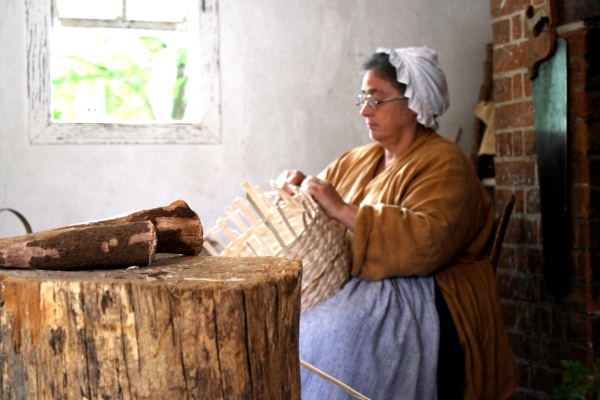 The basketmaker is listed as a trade in the Historic Area but in reality, during the 18th century, it wasn’t a trade at all. Here in the agricultural colony of Virginia, basketmaking was an essential skill almost every farmer mastered. Baskets were needed as containers to haul everything from vegetables to fish to manure around the farm.
The basketmaker is listed as a trade in the Historic Area but in reality, during the 18th century, it wasn’t a trade at all. Here in the agricultural colony of Virginia, basketmaking was an essential skill almost every farmer mastered. Baskets were needed as containers to haul everything from vegetables to fish to manure around the farm.
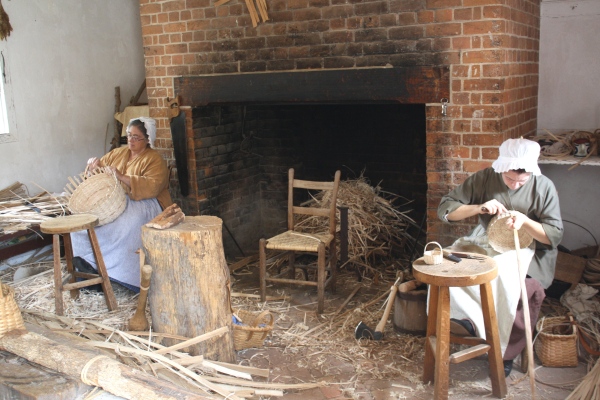 Kristy Engel and Terry Thon spend hours each day splitting wood, scraping it, and then weaving the strips into sturdy, beautiful works of art. It was amazing to see the heaping pile of wood littering the floor, knowing that these two women would craft each piece into something beautiful, sturdy, and above all-unique.
Kristy Engel and Terry Thon spend hours each day splitting wood, scraping it, and then weaving the strips into sturdy, beautiful works of art. It was amazing to see the heaping pile of wood littering the floor, knowing that these two women would craft each piece into something beautiful, sturdy, and above all-unique.
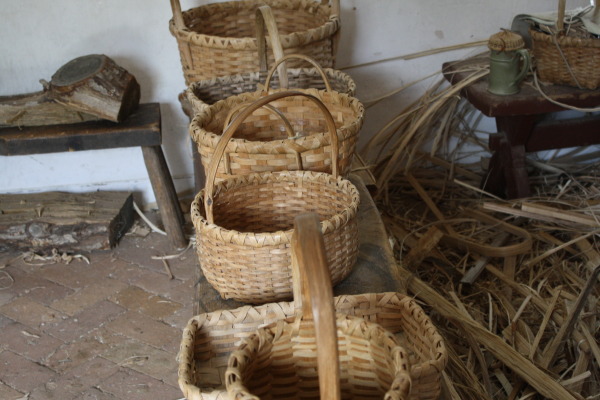 Terry has been weaving baskets for 17 years and she’s been a part of the CW family for almost twice as long. Kristy, also a foundation veteran of 16 years, is fairly new to the trade. She’s been helping out in the shop for the past seven years. Before she got her apprenticeship, Kristy jokes that she was homeless when she came to work. As a floating trades interpreter, she would report to where she was needed. Now, she knows that when she leaves a project each night, it will be waiting for her when she returns in the morning.
Terry has been weaving baskets for 17 years and she’s been a part of the CW family for almost twice as long. Kristy, also a foundation veteran of 16 years, is fairly new to the trade. She’s been helping out in the shop for the past seven years. Before she got her apprenticeship, Kristy jokes that she was homeless when she came to work. As a floating trades interpreter, she would report to where she was needed. Now, she knows that when she leaves a project each night, it will be waiting for her when she returns in the morning.
One thing we’ve learned as we interview various artisans for this blog is that just as it would have been in the 1700s, many of our trades work together. It’s the carpenters who bring the tree logs over—white oak which is perfect for weaving because it splits in straight, thin, flexible pieces. Once all of the ticks and other bugs are removed, the women then use an axe to chop the logs in half length-wise. Then it’s simply split, split, and split some more until the pieces are thin enough to start weaving.
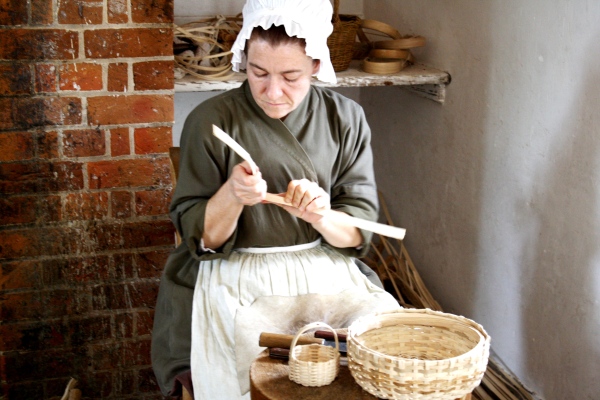 Once the strips are dry, they scrape them until they’re smooth. We asked the women how many splinters they have gotten on the job. Surprisingly, their answer? None!
Once the strips are dry, they scrape them until they’re smooth. We asked the women how many splinters they have gotten on the job. Surprisingly, their answer? None!
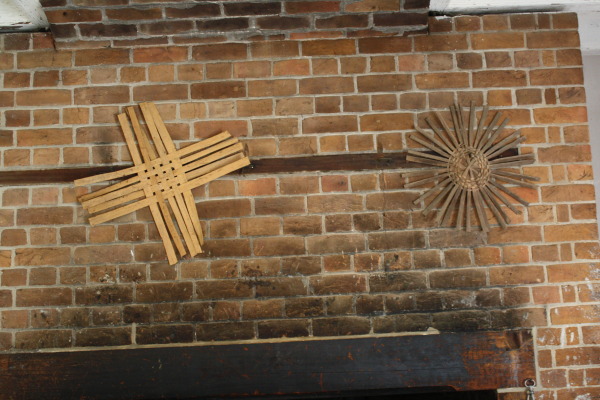 Then, working from the bottom up, they design either a square or round basket. The finished products, ranging in all different sizes, make their way to the Prentis Store where they’re available for purchase. But you won’t find many baskets in either of Kristy or Terry’s homes. They told me they don’t bring their work home with them.
Then, working from the bottom up, they design either a square or round basket. The finished products, ranging in all different sizes, make their way to the Prentis Store where they’re available for purchase. But you won’t find many baskets in either of Kristy or Terry’s homes. They told me they don’t bring their work home with them.
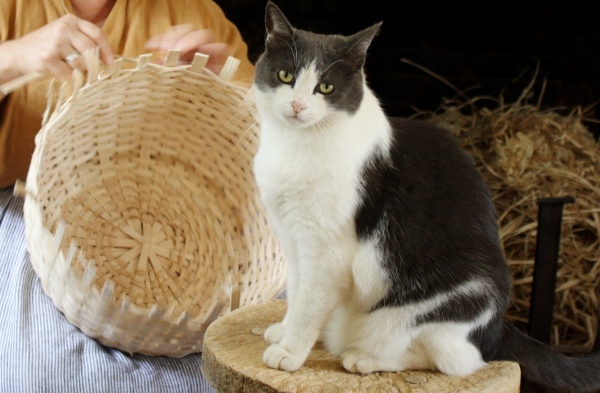 During the warmer months, you’ll find the basketmakers under the arbor behind the Wythe House in the mornings. In the afternoons, you may spot them near Shield’s Tavern where they sit on the stoop and work during Revolution in the Streets. But in the winter, you’ll find them inside under the watchful eye of Sir Thomas Grey.
During the warmer months, you’ll find the basketmakers under the arbor behind the Wythe House in the mornings. In the afternoons, you may spot them near Shield’s Tavern where they sit on the stoop and work during Revolution in the Streets. But in the winter, you’ll find them inside under the watchful eye of Sir Thomas Grey.
Sir Thomas isn’t our only colonial kitty. To meet the rest of the gang, click here.

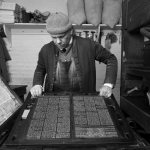


As a loom weaver and having done a few baskets, I found this blog interesting. Thanks. I also enjoyed reading about the two English men that are working for the master wheelwright at Colonial Williamsburg. A great opportunity for them.